By Dan Weisz
Costa’s Hummingbirds are small, compact hummingbirds of the Southwest. They are recognized by their large iridescent purple throat patch that flares out along the sides of the neck like an overgrown mustache. I saw this Costa’s Hummingbird one afternoon before sunset. It was perched on a thin branch of a mesquite tree just off of my front porch.
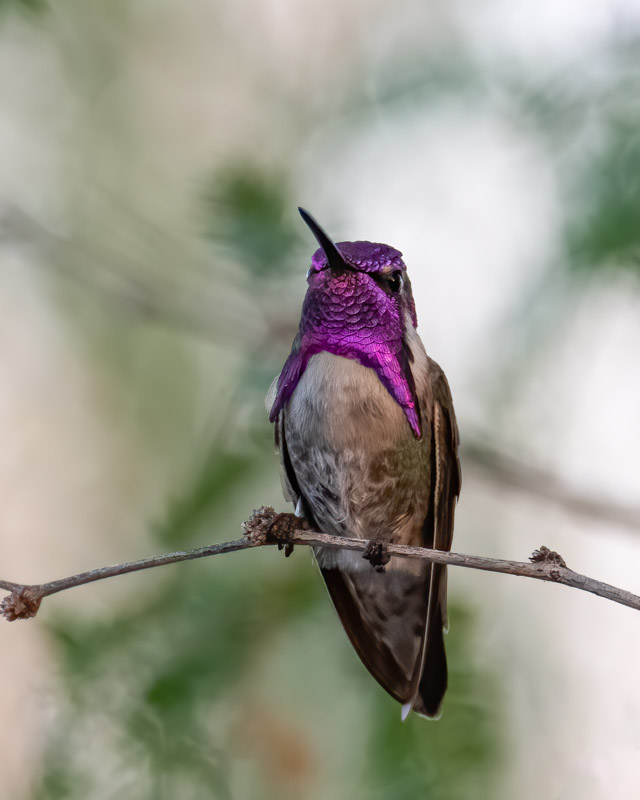
Those colored feathers are part of the Costa’s “gorget”. Pronounced “gore-jit” with the accent on the first syllable, gorget comes from the French word for throat. A hummingbird’s gorget actually has no color or pigment and the feathers are black. Light waves reflect and refract off the throat feathers, creating color in the same manner as sun glinting off a film of oil on water. To hear more about gorgets, listen to a short piece from Birdnote: https://www.birdnote.org/show/why-gorget-glitters
Each time the hummingbird turns just a bit, the color of its gorget may change dramatically.
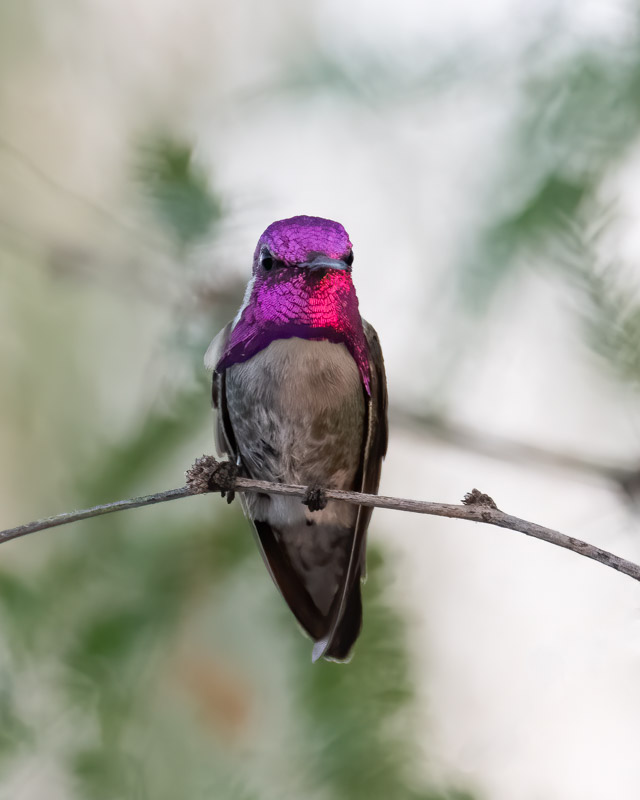
From this side, you can see how long the gorget is.
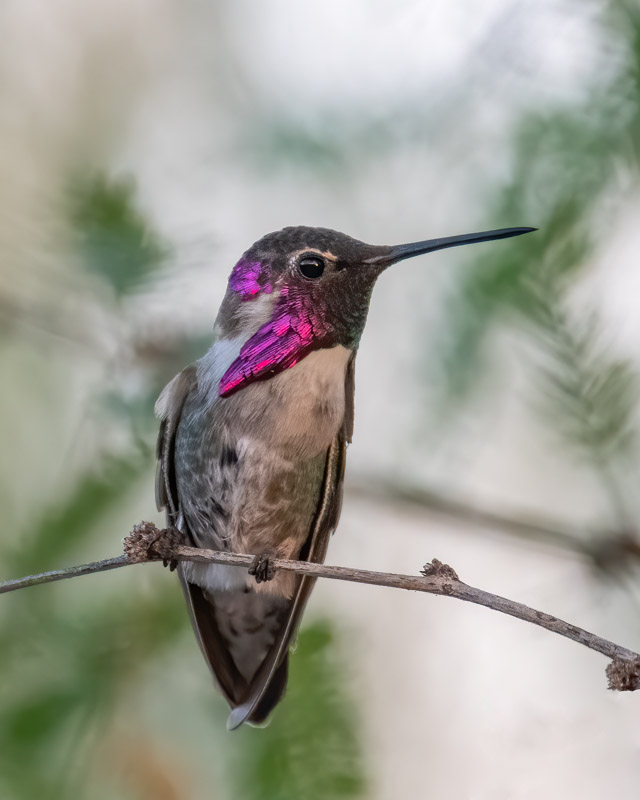
Costa’s are small hummingbirds whose wings are just reach beyond its short tail. In each photo, you can see how the colors of the gorget change depending on the slightest turn by the bird.
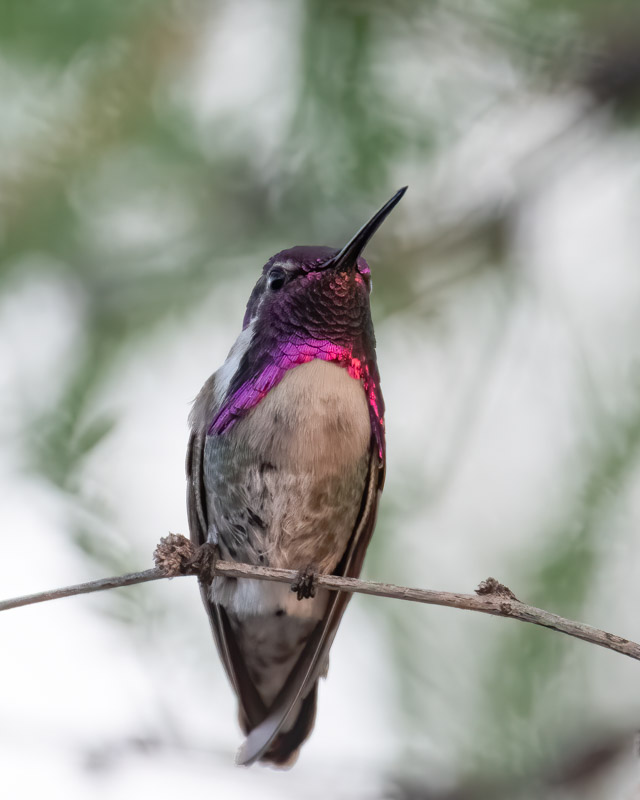
Male Costa’s Hummingbirds usually perch on a few favorite spots within their territory. It is their way of maintaining ownership and control of their territory. Because of that, if you find a perched Costa’s somewhere, once it leaves you may see it return to the same perch within a few short minutes. This bird remained on this perch for well over 5 minutes. Then it was off to either feed or monitor the rest of his territory.
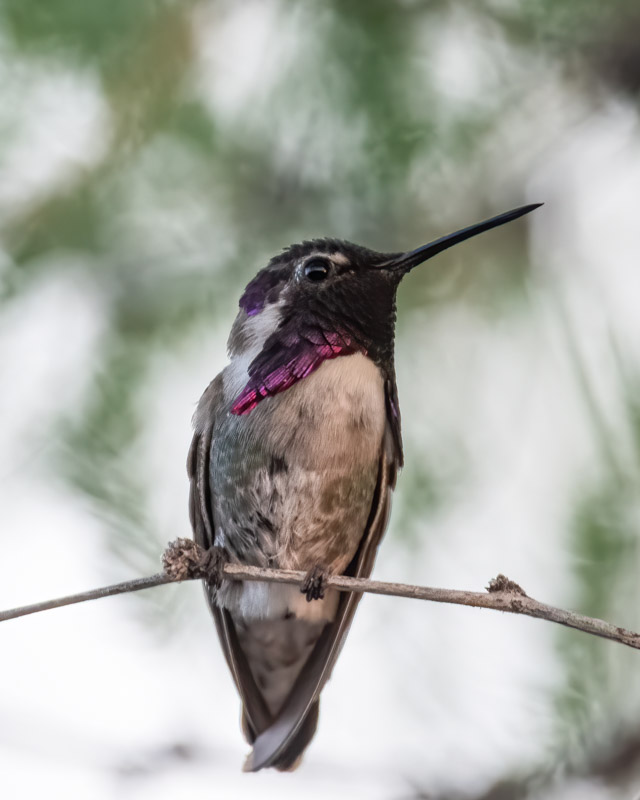
Costa’s Hummingbirds are found in desert scrub in the Sonoran and Mojave Deserts where they drink nectar from many desert plants. In addition, they will snap up small flying insects in midair. That’s where they get their protein. So if you see a hummingbird hovering in one spot over a tree and moving back and forth aimlessly, you may be observing a bird that is hunting tiny gnats for a filling snack.
In this next shot, some of his gorget feathers look metallic green at the bottom middle of his throat.
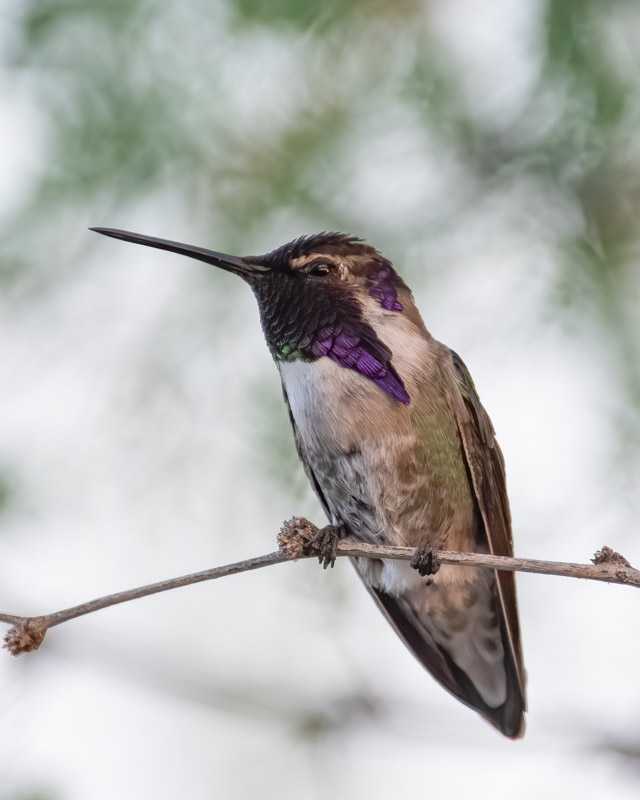
Enjoy the remaining portraits of this beautiful little bird.
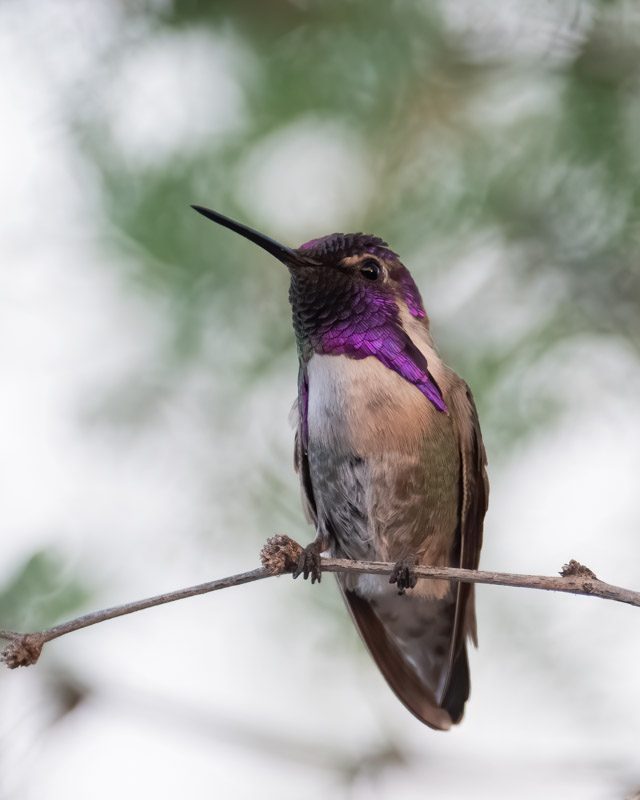
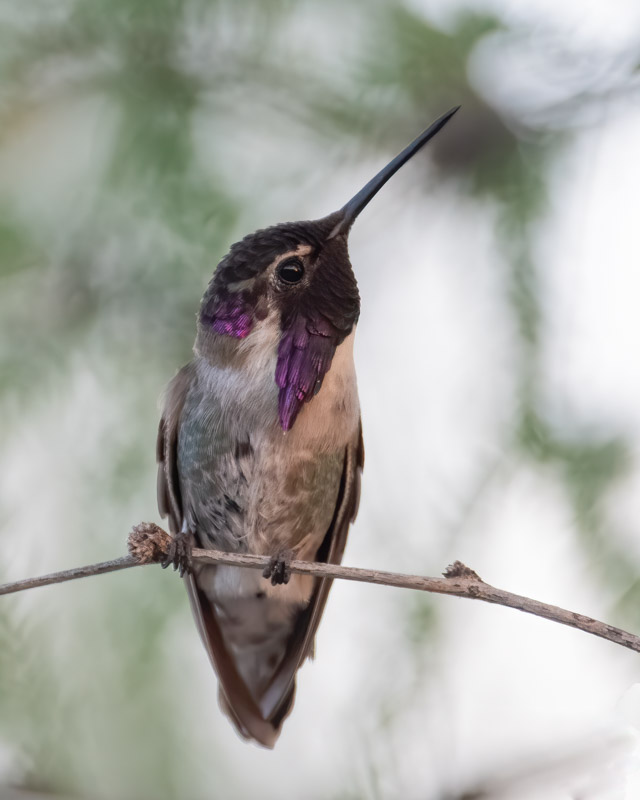
And a final “Wow” look.
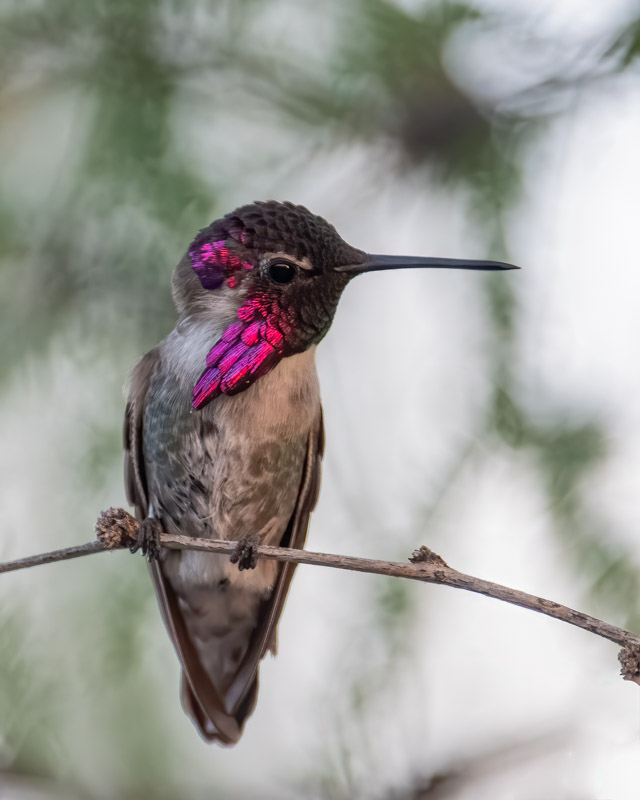
Although Costa’s Hummingbirds are more common in the Tucson area during winter and spring, they are also around during the summer. I am fortunate to have a few Costa’s at my house year-round. They are beautiful little birds.
On another note, I posted the following photo of a Costa’s one year ago, on June 13th.
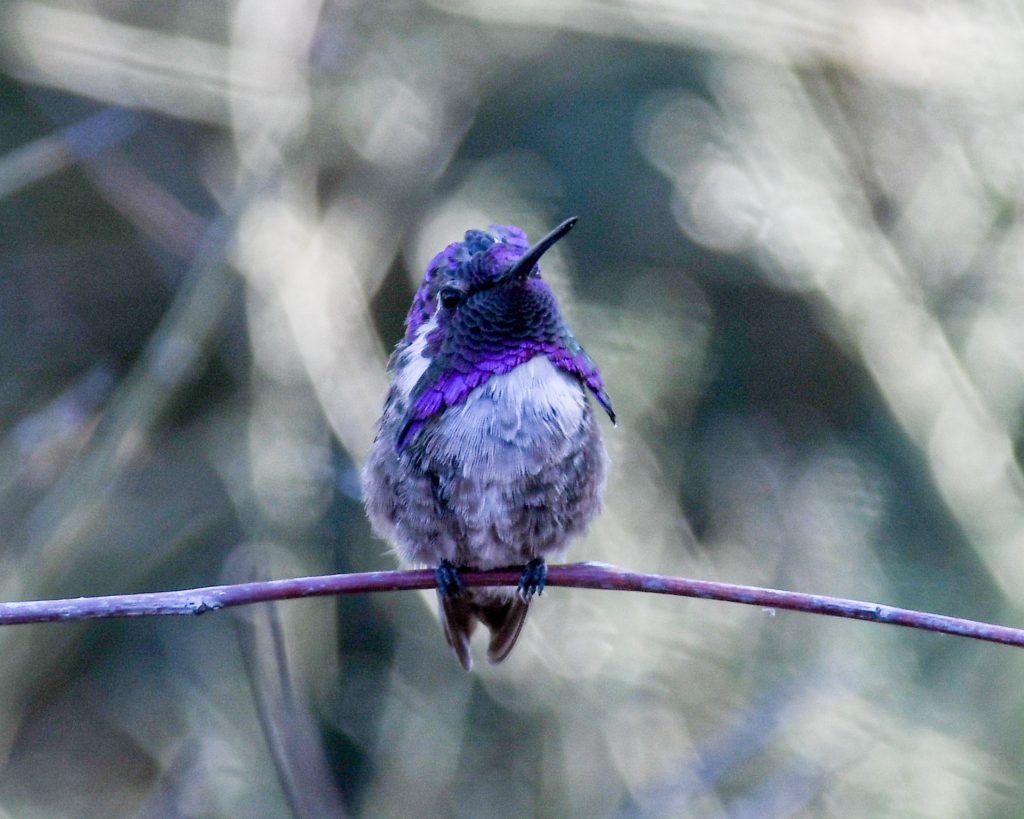
One of the many people who receive my photos is Greg H., who then forwards the emails to very many of his friends. One of them, Mai S., also forwards the photos to some of her friends and family. One of Mai’s friends in Australia, Thai Peck, is a talented artist. She was inspired to paint this beautiful watercolor of the Costa’s and send it to me. So this little Costa’s has traveled all around the world!!
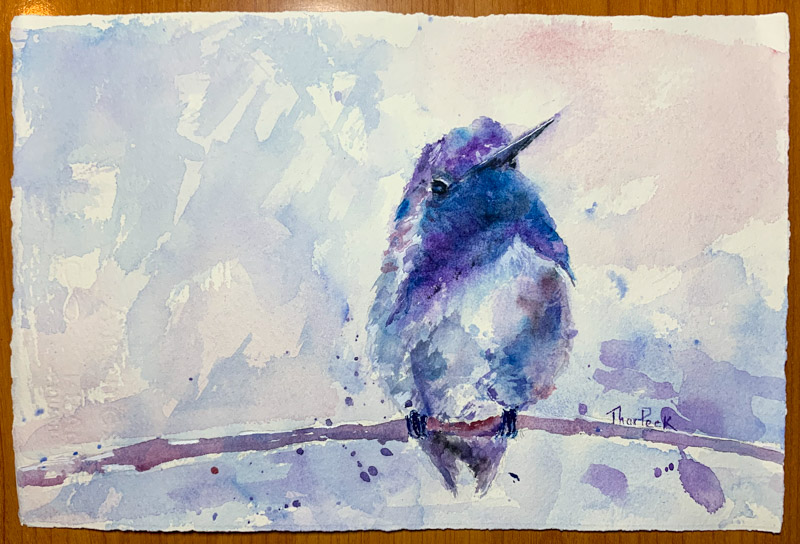
Thank you Thai, and thanks to all of you who enjoy my photographs and who share them with others!
